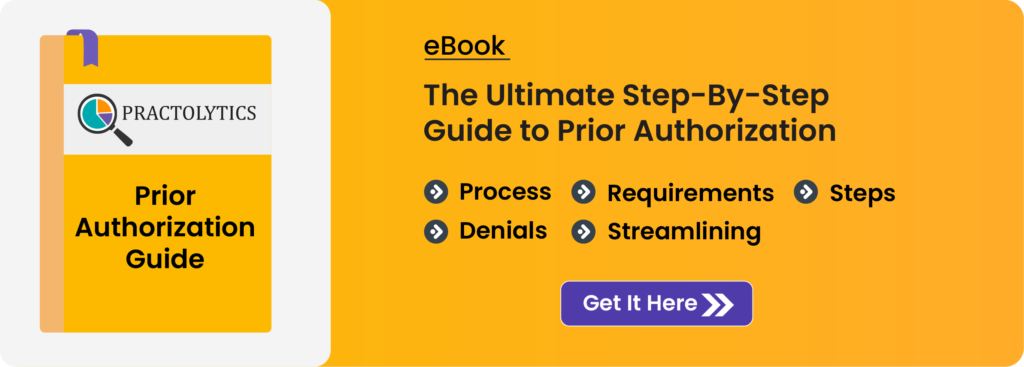Role of Technology in Automating Pre-Authorization
Few issues are as costly and enduring in the complex world of healthcare revenue cycles as claim denials. Every denial results in rework, postponed payments, and heightened patient annoyance in addition to lost revenue and a major administrative resource drain. Denials can occur for a variety of reasons, but a big offender—and one of the most preventable—is a failure of the pre-authorisation process.
Insurance payers are required to authorise some medical services, operations, or prescriptions before they are provided to a patient. This process is known as pre-authorisation, or prior authorisation. Payers created this crucial checkpoint to guarantee medical necessity and keep expenses under control. Understanding this procedure is essential for healthcare professionals to reduce denials and maintain a steady flow of income.
This blog post will delve into actionable strategies and best practices that healthcare practices can implement to build a Role of Technology in automating Pre-Authorization to stop denials before they even begin.
Table of Contents
Cost of Ineffective Pre-Authorisation
Understanding the high stakes is essential before we look at the answers. An improper pre-authorisation procedure may result in:
- Increased Claim Denials: The most direct impact. It is nearly a given that services rendered without the necessary pre-authorisation would be rejected.
- Cash flow problems and delayed payments: Denials result in either no payment at all or, at most, a payment that is much later than expected following a drawn-out appeals procedure. This directly impacts your practice’s liquidity.
- Administrative Burden: Staff time and resources are heavily expended reworking disallowed claims, locating authorisations after service, and handling appeals.
- Patient Dissatisfaction: Unexpected bills resulting from prohibited services can damage patients’ confidence and cause financial strain, which will affect how they feel about your clinic as a whole.
- money Loss: In the end, unresolved denials result in both lost money and uncompensated care.
Given these consequences, investing in a proactive and successful pre-authorisation strategy is not only wise but also financially required.
Best Practices for Minimising Denials Through Pre-Authorisation
1. Initiate Early and Proactively
The golden rule of pre-authorisation is: start early. The moment a service requiring authorisation is scheduled, the process should begin.
- Point-of-Scheduling/Pre-Registration: Integrate pre-authorisation checks into your scheduling and pre-registration workflows. As soon as a patient books an appointment for a service known to require authorisation (e.g., MRI, certain surgeries, specific medications), initiate the process.
- Patient Education: Inform patients upfront if their service requires pre-authorisation. Describe the procedure, any possible deadlines, and any information you may require from them. By controlling patient expectations early on, frustration can be avoided later.
- Clear Workflows: Clearly define who is in charge of starting pre-authorisation, what data is required, and the procedures to be followed for various payers and service categories.
2. Master Payer-Specific Requirements
This is arguably the most challenging, yet critical, aspect. Every payer has unique rules, forms, and submission methods for pre-authorizations.
- Comprehensive Payer Matrix: Create and meticulously maintain a detailed matrix or database of payer-specific requirements. This should include:
- Services requiring authorization
- Required forms and documentation
- Submission methods (online portal, fax, phone, EDI)
- Payer contact information (phone numbers, specific departments)
- Typical turnaround times
- Clinical criteria for approval (if available)
- Regular Updates: Payer rules change frequently. Dedicate staff time to regularly check payer websites, newsletters, and provider portals for updates. Subscribe to alerts from major payers.
- Leverage Technology for Rules: Many advanced pre-authorization software solutions come with built-in, frequently updated databases of payer rules, significantly reducing manual research.
3. Ensure Comprehensive and Accurate Data Submission
Incomplete or incorrect information is a primary reason for initial denial or delays.
- Clinical Justification: This is paramount. Ensure the medical record comprehensively supports the medical necessity of the service being requested. This includes:
- Clear and concise patient history and symptoms
- Relevant prior treatments and their outcomes
- Specific diagnosis codes (ICD-10)
- Specific procedure codes (CPT/HCPCS)
- Results of diagnostic tests (labs, imaging) that justify the service
- The physician’s clear rationale for the requested service
- Patient and Insurance Demographics: Double-check all patient demographic information, insurance policy numbers, group numbers, effective dates, and subscriber details. Even a minor typo can cause a denial.
- Match Service to Authorization: Ensure the service you are requesting authorization for precisely matches the service to be rendered and billed. Discrepancies here are immediate red flags for payers.
4.Leverage Technology for Automation and Efficiency
Manual pre-authorization is inherently inefficient. Technology offers powerful solutions to streamline the process.
- Real-Time Eligibility & Benefits Verification: This is the absolute foundation. Use automated solutions to connect to your EHR/PM system. These solutions can instantly confirm patient eligibility, benefits, and pre-authorization services requirements for CPT codes.
- Electronic Prior Authorization (ePA) Systems: Allow electronic submission of authorization requests to payers. This eliminates the need for faxes and phone calls. These often offer structured data entry and better tracking.
- Robotic Process Automation (RPA): RPA bots can greatly reduce manual labor and expedite extremely repetitive activities, such as logging into payer portals, pulling data from an EHR, or verifying authorization statuses.
- AI and Machine Learning (ML): Advanced systems can use AI/ML to:
- Predict the likelihood of authorization approval based on historical data.
- Analyze clinical notes (using NLP) to extract relevant medical necessity documentation automatically.
- Suggest appropriate codes and documentation based on patient condition.
- Automate intelligent routing of requests.
- Integrated Workflow Tools: Look for solutions that integrate seamlessly with your existing EHR and practice management systems to create a unified workflow, minimizing data re-entry and improving data flow.
- Proactive Follow-Up and Tracking
Submission is not the end of the process. Diligent follow-up is essential.
- Dedicated Tracking System: Implement a robust system to track the status of every pre-authorization request. This could be a module within your EHR/PM system, specialized software, or a well-managed spreadsheet.
- Consistent Follow-Up Schedule: Establish a schedule for following up with payers if you haven’t received a response by their stated turnaround time. Don’t wait for a denial to act.
- Document Every Interaction: Meticulously document all communications with payers, including dates, times, representative names, reference numbers, and the specifics of the conversation. This audit trail is invaluable if an appeal is necessary.
- Learn from Denials: Root Cause Analysis
Even with the best processes, some denials may occur. Use them as learning opportunities.
- Analyze Denial Codes: Understand the specific reason code provided by the payer for each denial related to pre-authorization.
- Identify Root Causes: Was it a missing piece of documentation? A typo? A misinterpretation of payer rules? A service rendered before authorization was obtained? Pinpointing the exact cause is crucial.
- Implement Corrective Actions: Based on the root cause analysis, adjust your pre-authorization process, update policies, provide targeted staff training, or revise your payer matrix to prevent similar denials in the future.
- Appeals Process: Have a well-defined and timely appeals process for denials that you believe were unwarranted. Strong documentation from your initial pre-authorization efforts will be your best asset here.
Conclusion:
Effective pre-authorisation is an ongoing process rather than a one-time solution for reducing denials. Proactive planning, careful execution, continual employee training, and the smart use of technology are all necessary. Healthcare providers can turn pre-authorisation from a reactive administrative burden into a strong, proactive defence against revenue loss by emphasising early beginning, correct data submission, thorough payer knowledge, and robust tracking.
Not only can a simplified pre-authorization services procedure increase your revenue, but it also makes your business run more smoothly, eases administrative burdens, and, in the end, guarantees that patients get the timely, essential care they require without having to worry about unforeseen costs. A well-functioning pre-authorization engine is absolutely essential for both patient happiness and financial stability in the complicated healthcare environment of today.
Healthcare revenue cycles are still plagued by claim denials, which are frequently the result of avoidable pre-authorization process errors. This article examines how a proactive, efficient pre-authorization approach can successfully prevent denials before they happen. Practices can drastically lower risk by starting authorizations at the scheduling stage, learning payer-specific requirements, and making sure that submissions are precise and comprehensive. The article also emphasizes how automation tools, such as electronic prior authorization systems, real-time eligibility checks, and AI-driven insights, may increase efficiency and accuracy. Providers can transform pre- authorization from a vulnerability into a competitive advantage by implementing a clear appeals procedure, refusal analysis, and focused follow-up. In the complicated healthcare environment of today, improving this process not only increases income but also improves operational flow and patient happiness.
Read More – Prior Authorization for MRI
Talk to Medical Billing Expert Today — Get a Free Demo Now!






